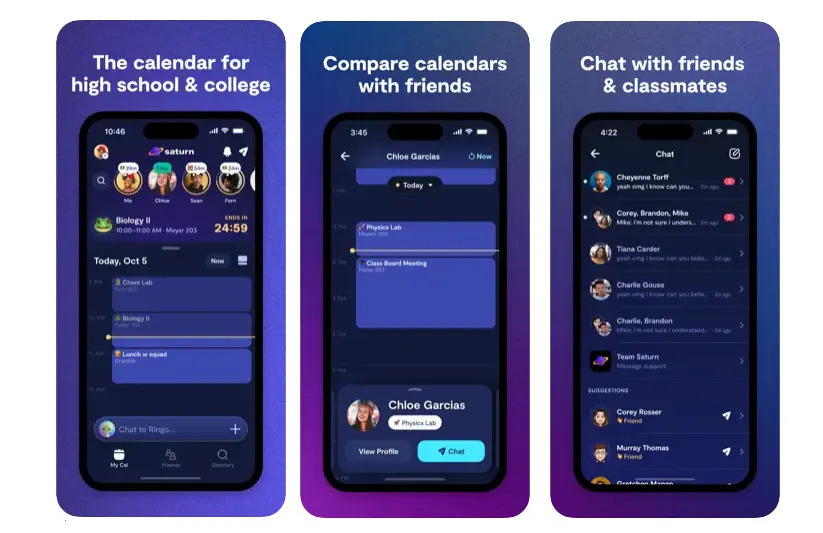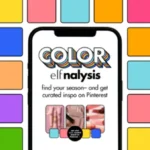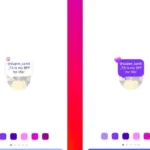In a move that further strengthens its position as a top platform among teenagers, Snapchat has acquired Saturn, a student scheduling app that helps users manage their school calendars and connect socially through shared schedules. With this strategic acquisition, Snapchat aims to integrate new calendar-based features into its ecosystem—offering teens a richer, more interactive way to stay connected.
What Is the Saturn App and Why Did Snapchat Buy It?
Saturn is a calendar-driven social platform built primarily for high school and college students. It allows users to:
- Share class schedules
- Plan meetups with friends
- Join events and communicate in-app
The app’s social design fits naturally with how Gen Z interacts online—balancing productivity and personal connection. While Saturn’s original goal was to help students stay on track with academic responsibilities, its real value lies in creating opportunities for spontaneous social interaction.
According to Engadget, Saturn is already supported in over 17,000 U.S. high schools, and its presence on college campuses is expanding. Snapchat confirmed that 80% of American high schoolers attend schools that support Saturn schedules, reinforcing the alignment between both platforms.
How Saturn Aligns With Snapchat’s Teen-Focused Strategy
Snapchat’s core user base is teenagers. Its features—ephemeral messaging, interactive filters, and real-time location sharing—are already tuned to the fast-paced, visually-driven nature of youth communication.
Integrating a student-focused calendar app enhances this experience by allowing users to:
- See when friends are free
- Sync schedules for group events
- Organize study sessions or hangouts
This move echoes Snap’s broader strategy to become a central hub for teen social life. By embedding school and social planning features into its existing interface, Snapchat creates a seamless way for teens to organize their time and maintain connections.
Snapchat already offers Snap Map, which shows users’ locations in real time. Adding calendar functions complements this by helping users plan where they’ll be—not just where they are.
Snapchat’s Integration Plans: What Happens Next for Saturn Users?
Currently, Snapchat will allow Saturn to operate independently while it evaluates the long-term integration roadmap. No immediate changes are expected for Saturn users, but the future seems clear: Snapchat will eventually absorb Saturn’s functionality into its main app.
This means students using Saturn today may soon access the same features inside Snapchat, likely enhanced with Snap’s visual and interactive tools.
However, questions remain:
- Will Saturn remain a standalone app long-term?
- How will Snapchat balance utility and privacy?
- Can Snap scale Saturn’s functionality without alienating its core audience?
Given Snap’s history of folding acquired features into its platform (such as Bitmoji), the expectation is that Saturn’s calendar tools will become part of a broader Snapchat experience over time.
What the Merger Means for Teen Social Planning
The merging of calendar scheduling with social interaction is a natural evolution for digital platforms targeting teens. Instead of toggling between different apps to check class schedules, plan events, and chat, users can do it all in one place.
Snapchat could use Saturn’s infrastructure to power features like:
- Real-time availability status (“in class,” “free now”)
- Automatic invites based on shared free periods
- Group reminders for meetups and school activities
This approach streamlines both academic and social life—providing students with useful tools without disrupting the playful nature of the Snapchat experience.
Privacy Concerns With Shared Schedules and Snap Map
While the integration offers convenience, it also raises privacy concerns. Snapchat’s Snap Map already lets users share real-time locations. When combined with forward-looking calendar features, it could reveal more than intended.
For instance:
- Users might accidentally share where they plan to be later in the day
- Ex-friends or ex-partners could misuse schedule visibility
- Teens might not fully understand privacy settings
These risks highlight the importance of strong privacy controls and user education. Fortunately, Snapchat already provides granular privacy settings for location sharing. Users can limit visibility to specific friends or activate Ghost Mode to stay hidden.
Still, adding calendar data introduces a new dimension. Snapchat will need to refine its interface and provide clear options so that teens can control who sees their schedules.
A Logical Expansion in Snap’s Ecosystem
Despite the privacy caveats, Snapchat’s acquisition of Saturn makes strategic sense. It’s a forward-thinking move that:
- Deepens Snapchat’s relevance in daily teen life
- Expands utility beyond photos and messages
- Taps into a generation that values convenience and connectedness
In fact, with apps like Google Calendar and Apple’s Reminders already popular for older users, Snap’s move into scheduling tools gives it a first-mover advantage in the teen market.
If executed correctly, Snapchat could redefine how teenagers manage their time, socialize, and collaborate—all within one app.
What This Means for Developers and Marketers
For developers, this acquisition showcases how utility-based social apps are gaining traction. Platforms that blend productivity and connection are increasingly valuable. For marketers, it signals that Snapchat is no longer just a photo-sharing app—it’s evolving into a lifestyle ecosystem.
Brands targeting Gen Z should:
- Explore campaign formats aligned with school calendars
- Leverage Snap Map and potential calendar-based triggers
- Consider in-app events timed around academic breaks, exams, or weekend hangouts
This change may also open new ad placements—like sponsored study reminders or back-to-school group invites—driven by schedule-based context.




